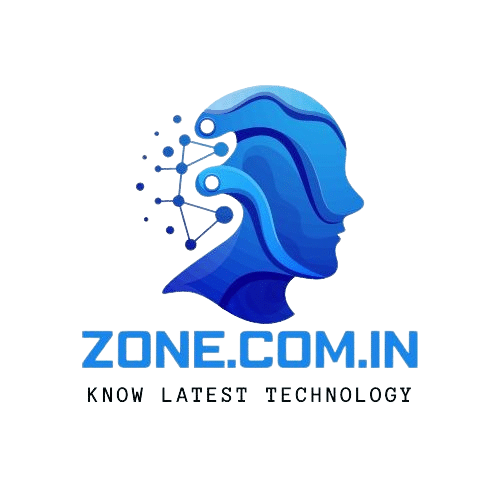IT Service Management (ITSM) has emerged as an essential framework for businesses aiming to provide high-quality services in today’s fast-paced digital environment. In order to boost productivity, customer satisfaction, and overall performance, effective ITSM ensures that IT services are aligned with business requirements. The fundamentals of ITSM, its core procedures, and methods for achieving service excellence are examined in this article.
Understanding IT Service Management

The practices of IT Service Management are intended to manage IT services throughout their lifecycle, from planning to delivery to support and enhancement. In order to achieve business goals, it integrates people, procedures, and technology in a structured approach to service management. Organizations can ensure that their IT services are dependable, cost-effective, and in line with the requirements of their stakeholders by adopting ITSM.
The Information Technology
Infrastructure Library (ITIL) is the most widely used ITSM framework. The role that ITIL plays in ITSM The lifecycle approach is emphasized in ITIL’s comprehensive guidelines for managing IT services. Service strategy, design, transition, operation, and continuous service improvement are all included. Organizations can standardize their IT practices, enhance service quality, and increase operational efficiency by adhering to the ITIL principles.
Key ITSM Processes An efficient ITSM strategy relies on a number of key processes to guarantee the smooth delivery of services. These are some:
Management of the Service Desk
The service desk serves as the IT department’s primary point of contact for users. Communication with users, service requests, and incident management are all handled by it. By promptly resolving issues and enhancing user satisfaction, an effective service desk can significantly cut down on downtime and increase uptime.
Incident Management The goal of incident management is to quickly restore normal service after an unexpected interruption. IT teams are able to resolve issues more effectively and minimize the impact on business operations by systematically logging, categorizing, and prioritizing incidents.
Problem Management The goal of problem management is to eliminate the root causes of incidents and prevent them from happening again. It involves creating a knowledge base for future reference and proactive problem identification, analysis, and resolution. Over time, incidents become less frequent and less severe with effective problem management.
Change Management

Change management ensures that all IT service changes are managed and carried out with the least amount of risk. Assessing the effects of changes, getting the necessary approvals, and coordinating their implementation are all part of it. Organizations can avoid disruptions and ensure that changes are in line with business objectives by effectively managing changes.
Benefits of ITSM Implementing ITSM has numerous advantages for businesses, including the following:
Improved Service Quality ITSM frameworks like ITIL offer the most effective methods for providing services of a high quality. Organizations can guarantee consistent and dependable service delivery by establishing standardized procedures and continuously improving them.
Increased Efficiency ITSM aids businesses in optimizing resource utilization by streamlining IT processes and reducing redundant tasks. Problems can be resolved more quickly, resources can be better distributed, and overall efficiency is increased as a result.
Improved Alignment with Business Objectives
ITSM guarantees that IT services are in line with business goals. IT departments are able to boost their competitive advantage, encourage innovation, and support business expansion thanks to this alignment.
Increased Customer Satisfaction By ensuring prompt and effective service delivery, effective ITSM raises customer satisfaction. A responsive help work area, fast occurrence goal, and proactive issue the board add to a positive client experience.
Carrying out ITSM: Best Practices A strategic approach and adherence to best practices are necessary for the successful implementation of ITSM. Important factors include:
Leadership and Stakeholder Engagement

For ITSM to be successful, strong leadership and active stakeholder engagement are essential. ITSM initiatives must be championed, resources must be allocated, and a culture of continuous improvement must be fostered by leaders.
Clear Process Definition Effective ITSM relies on the definition of clear and uniform processes. Procedures, roles, and responsibilities should be documented by organizations to ensure that all team members are aware of their duties and responsibilities.
Training and Development For the development of ITSM capabilities, ongoing training and development are essential. IT staff benefit from attending regular workshops, certification courses, and training to stay up to date on the most recent techniques and technologies.
Continuous Improvement ITSM is an ongoing procedure that must be evaluated and improved on a regular basis. Performance metrics should be established, feedback should be gathered, and data-driven insights should be used to make changes.
ITSM Implementation Obstacles Despite its advantages, ITSM implementation can be challenging. Common impediments include:
Resistant to Change Employee resistance to change may impede ITSM adoption. Resistance can be reduced by addressing concerns, promoting benefits, and involving staff in the implementation process.
Limited Resources
Limited resources, such as funds, personnel, and time, can have an effect on ITSM initiatives. To overcome these limitations, organizations must prioritize ITSM projects and efficiently allocate resources.
Process Complexity The ITSM process complexity can be overwhelming. Utilizing ITSM tools, simplifying processes, automating repetitive tasks, and managing complexity are all ways to increase productivity.
Utilizing Technology in ITSM ITSM practices are made possible and improved by technology. Some important technological enablers are:
ITSM Software Solutions for IT service management offer integrated platforms. In order to assist businesses in streamlining their ITSM processes, these tools provide features such as incident tracking, change management, asset management, and reporting.
Automation Automation has the potential to significantly boost ITSM efficiency. Automated workflows, ticketing systems, and self-service portals speed up processes, improve accuracy, and reduce the need for human intervention.
Analytics and Reporting With advanced analytics and reporting tools, businesses can learn more about how well their ITSM performance is going. Organizations can identify trends, measure key performance indicators (KPIs), and make educated decisions through data analysis.
Study of Case: A global financial services company’s implementation of ITIL-based ITSM practices serves as an example of the impact of ITSM. The company was able to accomplish the following by adopting ITIL:
Enhanced Incident Management: User satisfaction increased as incident resolution times decreased by 40%.
Less downtime: System downtime was reduced by 30% through proactive problem management and effective change management.
Cost reduction: Costs were significantly reduced as a result of streamlined procedures and optimized resource utilization.
In a complex, high-stakes environment, this case demonstrates how ITSM can improve service delivery and drive tangible benefits.
9. The Future of ITSM The future of ITSM is changing in response to shifting business requirements and technological advancements. Some new trends are:
Artificial Intelligence (AI) and Machine Learning (ML)

Artificial intelligence (AI) and machine learning (ML) are reshaping ITSM. Improved ITSM processes are made possible by these technologies, which make predictive analytics, automated incident resolution, and intelligent decision-making possible.
Cloud-Based ITSM Solutions Cloud-based
ITSM solutions are cost-effective, flexible, and scalable. As a means of managing their IT services, organizations are increasingly turning to cloud-based platforms, facilitating remote work and supporting digital transformation initiatives.
Integration of DevOps
When ITSM and DevOps practices are combined, the development and operations teams are connected. Collaboration is facilitated, service delivery is accelerated, and IT services’ dependability and adaptability are guaranteed by this integration.
Conclusion
effective IT service management is necessary for providing IT services of high quality that meet business goals and increase customer satisfaction. Organizations can achieve excellence in ITSM by utilizing technology, implementing frameworks like ITIL, and adhering to best practices. ITSM will continue to be a crucial component in driving business success and maintaining digital age competitiveness. Organizations can guarantee that their IT services will continue to be dependable, effective, and in line with their strategic goals through innovation and continuous improvement.

